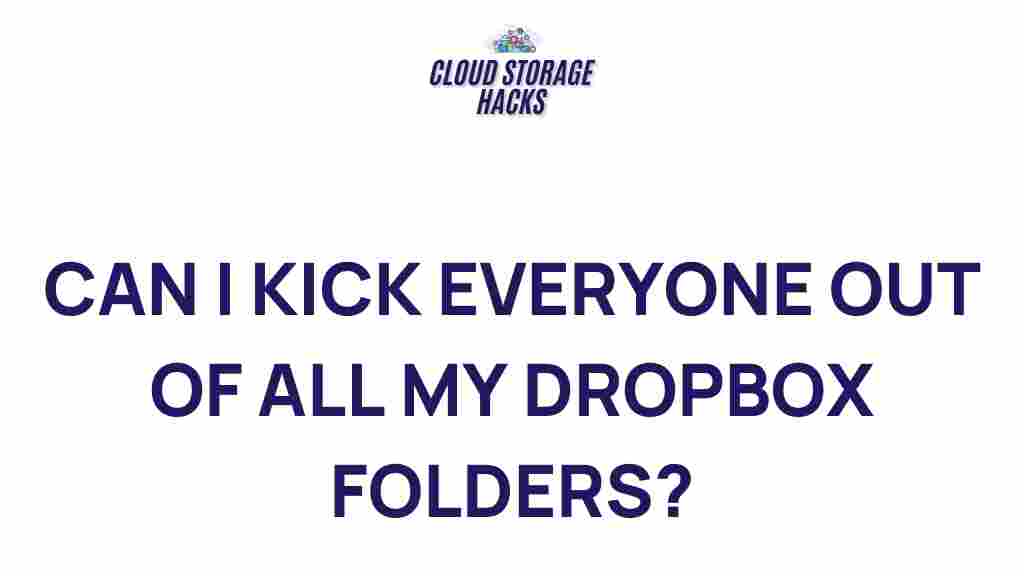Unlock the Power of Dropbox: How to Manage Permissions Across All Folders
Dropbox is one of the most popular cloud storage services, offering a seamless way to store, share, and collaborate on files. Whether you’re a business, freelancer, or simply someone who uses Dropbox for personal storage, understanding how to manage permissions across all folders is key to unlocking the full potential of this platform. In this article, we’ll delve into the details of Dropbox’s permission settings and show you how to manage access across your folders effectively.
Why Proper Folder Permissions Matter
When using Dropbox, folder permissions ensure that only authorized users can access, edit, or share your files. Managing these permissions correctly can help keep your sensitive data secure while promoting efficient collaboration. Without proper access control, your files can become vulnerable, leading to accidental data loss or unauthorized changes. By mastering folder permissions, you can ensure that your Dropbox account remains both secure and efficient.
Step-by-Step Guide: How to Manage Dropbox Folder Permissions
Managing permissions in Dropbox is a simple yet essential task. Here’s a step-by-step guide to help you get started:
1. Open Your Dropbox Account
Begin by logging into your Dropbox account on your desktop or mobile app. If you don’t already have an account, visit the Dropbox website to sign up and start using the service.
2. Locate the Folder You Want to Manage
Navigate to the folder you wish to set permissions for. You can do this by browsing through your file structure or using the search bar for faster access.
3. Right-Click the Folder and Choose “Share”
Once you’ve located the folder, right-click on it (or click the three-dot icon next to it) and select the “Share” option. This will open the sharing settings where you can customize access permissions.
4. Adjust Permissions for Specific Users
In the sharing settings, you’ll see a list of people who have access to the folder. To modify their permissions, simply click on their name and select one of the following options:
- Can Edit – This allows the user to view and modify the contents of the folder.
- Can View – This option grants read-only access, meaning users can view files but cannot make any changes.
- Remove – If you want to revoke a user’s access entirely, click “Remove” next to their name.
5. Set Permissions for Links
If you’re sharing a link to your folder, you can customize the permissions for that link as well. Dropbox allows you to set the following options:
- Anyone with the link – Anyone who has the link can access the folder. You can further restrict this to view-only or editing rights.
- Only people with access – Only individuals you’ve granted specific access to will be able to open the link.
6. Save Your Changes
Once you’ve set the desired permissions for your folder, click “Done” or “Save” to confirm your changes. These adjustments will now be applied to the folder and all its contents.
Advanced Dropbox Permissions Settings
Dropbox also provides advanced permissions for teams and businesses. These include options for managing access to entire workspaces, setting restrictions on shared links, and even auditing access logs. If you’re using Dropbox Business or Dropbox Plus, you can also:
- Assign different roles to users within your team, like Admin or Member.
- Restrict the ability to download or print files for added security.
- Set up two-step verification for higher levels of account protection.
For more advanced settings, it’s best to consult Dropbox’s official help guide here to explore all available options for managing team permissions.
Common Issues When Managing Dropbox Permissions
While Dropbox’s permission settings are straightforward, users sometimes encounter challenges. Here are some common issues and troubleshooting tips:
1. Users Can’t Access Shared Folders
If users are unable to access a shared folder, double-check the following:
- Ensure the user is logged into their Dropbox account.
- Confirm that the correct permissions are set, such as “Can View” or “Can Edit.”
- If the folder is shared via link, ensure that the link settings are correct (i.e., it’s not restricted to people with access only).
2. Changes Not Reflecting in Shared Folders
If you’ve updated a folder’s permissions but others aren’t seeing those changes, try these solutions:
- Refresh your Dropbox page or app.
- Ask users to log out and log back in to force the changes to update.
- Check that the user has the latest version of the Dropbox app installed.
3. Folder Permissions Not Saving
If permissions are not saving, ensure that you have a stable internet connection. If issues persist, try clearing your browser’s cache or reinstalling the Dropbox app.
Conclusion: Mastering Dropbox Permissions for Greater Control
By understanding and effectively managing folder permissions in Dropbox, you gain ultimate control over who can access and modify your files. Whether you’re collaborating with a team or simply organizing personal documents, proper permissions can ensure security, streamline workflows, and prevent unwanted changes. Regularly review your permissions to keep your data safe and optimize your Dropbox experience.
Start managing your Dropbox folder permissions today, and unlock the full potential of this powerful cloud storage tool. For more in-depth guidance, explore additional Dropbox resources that can help you master the platform’s features.
This article is in the category Guides & Tutorials and created by CloudStorage Team
